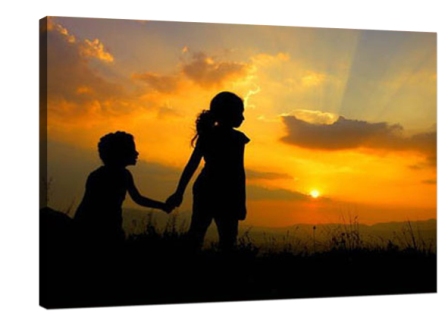The choice of Angle in photography creation
The shooting direction is usually divided into: front Angle, oblique Angle, side Angle, reverse Angle and back Angle.
1. Positive Angle
The front Angle refers to the shooting position with a block Angle to the front of the subject, which mainly represents the typical image of the front of an object. For example, architecture, whether ancient or modern in the design pay attention to the front style and decoration, such as Beijing tiananmen Square and the exhibition hall, museum, etc. A positive Angle shows the true color of the image. A good example is the appearance of a person. A positive image is more characteristic of a person's appearance. The composition from a positive Angle is mainly to show that the objects are mostly located on the dividing line in the center of the picture, which is usually a symmetrical structure. Generally speaking, the composition from a positive Angle is more dignified and stable.
2. The oblique Angle
A slant Angle is a position taken from a front Angle, or left or right around an object moving to a side Angle. When the deviation from the positive and side Angle is small, the image of the positive side usually does not change much. You can choose the appropriate shooting position within the range of the positive and side angles, which can not only show the image characteristics of the object, but also have rich and varied changes of the object image, often receiving vivid effects.
3. Side Angle
Side Angle generally refers to the shooting position that is perpendicular to the side of the subject, which mainly shows the typical image of the side of some objects. For example, in portrait photography, the profile of the figure can be seen clearly from the side Angle, which makes the portrait form varied. In the objective object, there are many objects can only see its appearance from the side, such as the figure of people moving around, the foreign trade of various vehicles and some appliances have such a nature, in this condition, the side Angle can better show the characteristics of the object. The side Angle is more flexible than the front Angle, and some changes can be made to the left and right sides of the side perpendicularity, so as to get the best shooting position of the object's side image.

4. The opposite Angle
The reverse Angle refers to the position of the subject that moves from the side Angle around the subject to the back Angle. It has abnormal consciousness. Often can the object of a unique spirit, in the common use of the front, side, oblique side Angle contrast, it has a surprise effect, often can be very vivid image. Of course for some objects the image is similar to a slanted image. Therefore, the opposite Angle requires the photography object, or only the appropriate object can choose the opposite direction.
5. Back Angle
The direction of the back Angle is not only the image of the main subject, the form of composition, but also the content. Therefore, the direction of shooting should be changed according to the specific requirements of the subject and the theme. As for the front Angle, oblique Angle, side Angle, reverse Angle, back Angle, there is no pros and cons, properly used, will get a successful composition.
Recent Posts
-
Bring the Ocean Home: Queensland Great Barrier Reef Photos on Canvas Wall Art Prints
Australia’s Great Barrier Reef is one of the world’s most breathtaking natural wonders. Its kaleidos …16th Sep 2025 -
Capture the Beauty of Gold Coast with Photography on Canvas Prints
Why Choose Gold Coast Photography on Canvas Prints? Gold Coast is one of Australia’s most iconic des …16th Sep 2025 -
The Charm of Zebra Painting Art Prints: A Unique Touch for Your Home Décor
When it comes to adding a unique touch to your home décor, few things capture attention like zebra p …16th Sep 2025
